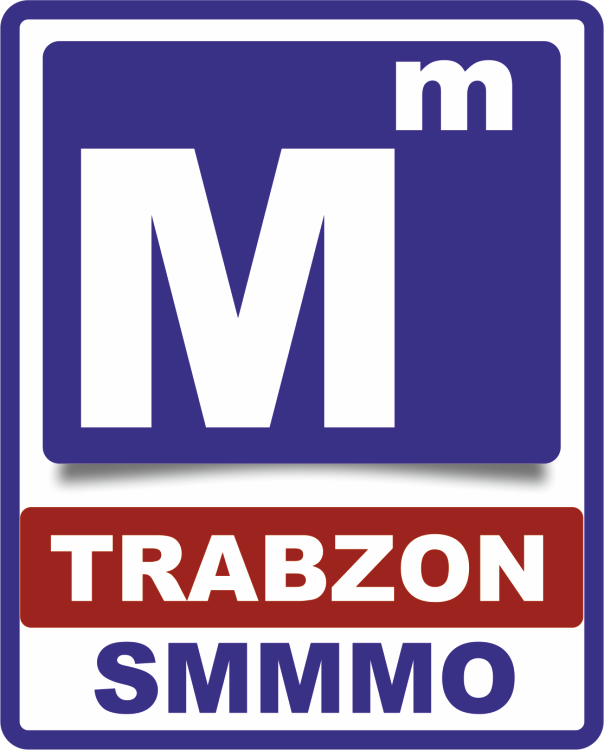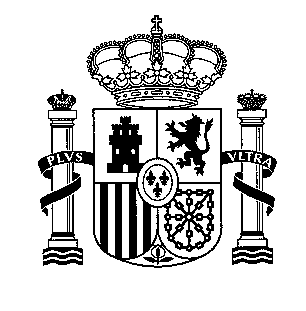PORTABLE FIRE EXTINGUISHER PLAN PLAN LAST UPDATED [DATE]
APPLICATION TO SALARY SACRIFICE A PORTABLE ELECTRONIC DEVICE(YOUR BUSINESS NAME HERE) – SAFE WORK PROCEDURE PORTABLE
10 R NOT REPORTABLE EPUBLIC OF NAMIBIA HIGH COURT
10 R REPORTABLE EPUBLIC OF NAMIBIA HIGH COURT OF
136KHZ PORTABLE TRANSMITTER THE TRANSMITTER DESCRIBED HERE HAS BEEN
3 PORTABLE FIRE EXTINGUISHERS REFERENCES 29 CFR 1910157 PORTABLE
Portable Fire Extinguisher Plan
Portable Fire Extinguisher Plan
Plan last updated: [date]
Policy Statement
[Company XYZ] provides portable fire extinguishers for employees to use to extinguish incipient fires. The extinguishers are mounted and located so that they are easily identified and readily accessible to employees without subjecting the employees to potential injury.
Authority and Scope
Authority: 29 CFR 1910.157 (Portable Fire Extinguishers) [replace regulation with state rules if applicable]
Scope: This Plan covers the placement, use, maintenance, and testing of portable fire extinguishers to extinguish incipient fires at the workplace.
Plan Administration
Table [number] provides the personnel and contact information for the administration of the fire extinguisher plan.
Table [number]
Program Contact Information
[Modify the list and following job functions as applicable to your organization.]
|
Function |
Name/Department |
Contact Information |
|
Safety and Health Manager |
[name] |
Work phone: Cell phone: |
|
Plant Manager |
|
Work phone: Cell phone: |
Safety and Health Manager. The Administrator will:
Develop and revise, when necessary, the Fire Extinguisher Plan
Provide relevant training to personnel who are authorized to use fire extinguishers.
Develop and implement a fire extinguisher maintenance and update schedule
Take corrective action when needed
Plant Manager. The Plant Manager will:
Ensure that only authorized employees use fire extinguishers
Plan Review and Update
The Plan will be reviewed annually. It will be revised when:
New fire hazards are introduced to the workplace
The regulations change
Operations at the facility change that affect accessibility and use of fire extinguishers
Near misses or accidents demonstrate a failure of the Plan
Definitions
Incipient fire—a fire in its beginning stage that can be controlled or extinguished with a portable fire extinguisher without the need for protective clothing or breathing apparatus.
Portable fire extinguisher—a manually operated, pressurized container that contains an agent that when discharged can extinguish an incipient fire.
Portable Fire Extinguisher Use
[Choose one of the following options for the use of portable fire extinguishers, and delete the option(s) not chosen.]
[Option 1—Emergency Action and Fire Prevention Plan has been established]
Portable fire extinguishers are provided for use by designated employees as authorized and trained to use them to fight incipient fires. All other employees must evacuate immediately upon the sounding of a fire alarm or when instructed by authorized personnel.
See Attachment [number] for the list of employees trained and authorized to use portable fire extinguishers.
[Option 2]
All employees will be trained and authorized to use portable fire extinguishers to fight incipient fires.
Selection, Types and Locations of Portable Fire Extinguishers
Selection
Portable fire extinguishers have been selected and distributed at the facility by [name, job title, or department] on the basis of the types of anticipated workplace fires and on the size and degree of hazard that would affect their use.
Attachment [name] contains the Fire Extinguisher Inventory that lists each portable fire extinguisher distributed in the facility, its type, and location.
Types and Ratings
This facility maintains [U.L. (Underwriters Laboratories), or F.M. (Factory Mutual Laboratories)]-approved extinguishers for the following types of potential fires:
[Modify the list as applicable to your facility.]
Type A—ordinary combustibles such as wood, cloth, paper, rubber and many plastics
Type B—flammable liquids, such as gasoline, oil, grease, tar, oil-based paint, lacquer, and flammable gas
Type C—energized electrical equipment, including wiring, fuse boxes, circuit breakers, machinery and appliances
Type D—combustible metals such as magnesium and potassium (uncommon)
Locations
Portable fire extinguishers are located in or in close proximity to all fire hazard areas. Following is the maximum employee travel distance to any extinguisher in the facility:
Type A–75 feet from a hazard area
Type B–50 feet from a hazard area
Type C–Applicable Type A or B distance
Type D–75 feet from the combustible metalworking area
Fire Extinguisher Operating Procedures
Authorized and trained employees will implement the pull-aim-squeeze-sweep (PASS) system for extinguishing incipient fires. Each employee will determine whether he or she is capable of fighting a fire on a case-by-case basis.
Following are the basic required conditions under which an employee may fight an incipient fire:
The fire is small and at its beginning stage
Heavy smoke is not present
An appropriate fire extinguisher is readily available
There is an unblocked exit immediately available for evacuation
One or more employees are authorized to get hold of the nearest appropriate extinguisher(s), move to a position upwind of the fire if the air is moving, and operate the extinguisher following the PASS procedure:
P—Pull the pin located in the extinguisher’s handle.
A—Aim the nozzle at the base of the fire.
S—Squeeze the lever or handle.
S—Sweep from side to side at the base of the fire until the fire is out or the canister is empty.
Safety Precautions
Employees will evaluate the risks of fighting an incipient fire before attempting to extinguish it.
Escape if the fire grows. If employees elect to put out a fire and it grows too large to control, they will immediately escape through the nearest exit, and close—but NEVER LOCK—the door behind them if possible.
Keep away from hazardous substances. When hazardous substances are involved, smoke and gases released from a fire can be toxic, so employees should never attempt to put out a fire if they have any doubts about their own safety and health. If they have any doubts, employees will evacuate the area and wait for emergency responders who have the proper equipment and are trained in fire-fighting procedures.
Inspection, Maintenance, and Testing
All portable fire extinguishers will be maintained in a fully charged and operable condition and kept in their designated places at all times except during use.
Inspection and Maintenance
[Insert Name] will visually inspect all portable fire extinguishers [time interval] according to the following guidelines:
Extinguishers must be located in their designated location, secured properly and the proper type for the hazard area.
Access to extinguishers is not obstructed.
Extinguishers are examined for obvious physical damage, corrosion, leakage, or clogged nozzles.
Legible operating instructions are on the extinguisher nameplate facing outward.
Seals and tamper indicators are not broken or missing.
Pressure-gauge readings or indicators are in the operable ranges.
Inspection tags must be initialed and dated
[Insert Name] will conduct a maintenance check at least annually according to the following guidelines:
Conduct all monthly inspection checks.
Inspect the hose and nozzle for cracks, blockages, or other damage.
Inspect the extinguisher shell for corrosion, dents, or other damage.
Weigh carbon dioxide extinguishers to ensure no weight deviation greater than 10%.
Corrective Actions
Defective extinguishers will be removed, marked or tagged with information about the defect, and placed in a designated location until repair and/or recharging is performed.
The inspector will [method to provide equivalent protection, e.g., replace extinguishers] when portable fire extinguishers are removed from service for maintenance and recharging.
Recordkeeping
[Insert Name] will retain a record of the annual inspection and maintenance date for each extinguisher for at least one year after the last entry or the life of the extinguisher shell, whichever is less.
See Attachment [number] for a copy of the Portable Fire Extinguisher—Inspection and Maintenance Record form and maintenance records.
Records of inspections and maintenance procedures performed under contract by outside vendors must be submitted to [insert name] at the end of each contract year.
Hydrostatic Testing
All portable fire extinguishers will be hydrostatically tested at regular intervals and whenever they show evidence of corrosion or mechanical damage.
See Attachment [number] for a copy of the Certified Hydrostatic Test Schedule form.
[Insert Name] will ensure that portable extinguishers are hydrostatically tested at the intervals listed in Attachment [number] except when:
The unit has been repaired by soldering, welding, brazing, or use of patching compounds
The cylinder or shell threads are damaged
There is corrosion that has caused pitting, including corrosion under removable name plate assemblies
The extinguisher has been burned in a fire
A calcium chloride extinguishing agent has been used in a stainless steel shell
Extinguishers subject to the exceptions described above will be tested or replaced immediately upon discovery of damage.
An internal examination of cylinders and shells will be made prior to the hydrostatic tests.
Extinguisher hose assemblies. Hydrostatic tests will be performed on extinguisher hose assemblies which are equipped with a shut-off nozzle at the discharge end of the hose. The test interval will be the same as specified for the extinguisher on which the hose is installed.
Recordkeeping
[Insert Name] will retain a certified record of hydrostatic testing for each portable extinguisher according to the time intervals listed in Attachment [number]. Each record will include the date of the test, the signature of the person who performed the test, and the serial number, or other identifier, of the fire extinguisher that was tested. Such records will be kept until the extinguisher is hydrostatically retested at the specified time interval, or until the extinguisher is taken out of service, whichever comes first.
Training
[name] will provide employees authorized to use portable fire extinguishers with an educational program upon initial employment and annually thereafter to familiarize them with the general principles of fire extinguisher use and the hazards involved with incipient stage fire fighting.
Employees who have been designated to use firefighting equipment as part of an emergency action plan will be trained in the use of the appropriate equipment.
4 REPORTABLESPECIAL INTEREST IN THE HIGH COURT OF
ADMINISTRATIVE MANUAL POLICY 225A PORTABLE ELECTRONIC DEVICE CUSTODIAN
AMERICAN PILOTS’ ASSOCIATION NAVIGATION AND TECHNOLOGY COMMITTEE PORTABLE PILOT
Tags: extinguisher plan, fire extinguisher, extinguisher, [date], portable, updated
- CENTRO LAS AMERICAS PRESENTA CRIANZA CON CARIÑO PARA PADRES
- NA UPAŁY NIE MA RADY? SĄ!!! OTO NAJWAŻNIEJSZE INFORMACJE
- J UDECĂTORIA CORABIA JUDEŢUL OLT CORABIA STR CAROSETTI NR
- (NAZIV ORGANIZATORA) (SJEDIŠTE ORGANIZATORA ADRESA) (BROJ SPISA) ZABOK
- APRENDER A APRENDER ANA ROBLES EN HTTPWWWGALEONCOMAPRENDERAAPRENDERGENERALINDICEHTML INDICE A
- 32 INTERACTION BETWEEN HUMUS FORM AND HERBICIDE TOXICITY TO
- JOBAID BIJ DE WERKVORMEN IN HET BOEK HET GAAT
- PLOT RIZWAN KHAN (SHAHRUKH KHAN) IS A MUSLIM CHILD
- AUTISTIC MISSING PERSON PROTOCOL (J DIVISION PILOT) THE AUTISTIC
- 18 CAPITULO DÉCIMO DOCUMENTOS Y ACTOS EXTRANJEROS 1 INTRODUCCIÓN
- PIECZĄTKA ZAKŁADU PRACY ……………………………… DATA WYSTAWIENIA ZAŚWIADCZENIA ZAŚWIADCZENIE O
- WARUNKI KONKURSU OFERT O UDZIELENIE DOTACJI PODMIOTOM UPRAWNIONYM W
- □ ART 8 PRODUZIONE DI RIFIUTI SPECIALI NON ASSIMILATI
- Startovní Listina Start č loď xii Mistrovství čr na
- DIETETYKA WYKAZ OGÓLNYCH ZAGADNIEŃ ZAWODOWYCH NA EGZAMIN DYPLOMOWY 1
- COMPROMISO DEL INVESTIGADOR COLABORADOR DR (NOMBRE Y DOS APELLIDOS
- OPIS MODUŁU KSZTAŁCENIA ZAŁĄCZNIK NR 1 NAZWA MODUŁU (PRZEDMIOTU)
- + NOTA DE PRENSA DEPARTAMENTO DE COMUNICACIÓN WWWFBBVAES LA
- Iraq the Middle East Pivot Report on Lecture by
- TODOLITE FUNGICIDA PLIOLITE PARA FACHADAS DESCRIPCIÓN PINTURA PARA
- DISCAPACIDAD E INSERCIÓN LABORAL HACIA LA COOPERACIÓN SOCIAL POR
- BOARD OF TUSTEES COMMITTEES OPERATIONAL POLICY 65 BOARD OF
- ПРИЕМАНЕ НА XML ДОКУМЕНТИ – ТЕХНИЧЕСКО ОПИСАНИЕ СЪДЪРЖАНИЕ СЪДЪРЖАНИЕ………………………………………………………………………………………
- WYMAGANIA EDUKACYJNE JĘZYK ANGIELSKI KLASA I 1 (NIEZADOWALAJĄCY) 2
- Zagorski Vodovod doo Zabok Ksavera Šandora Gjalskog 1 oib
- DOO ZA OBAVLJANJE VODNIH USLUGA VODOVODNA 1 POŽEGA FINANCIJSKI
- WOGA307 PAGE 3 WIPO E WOGA307 ORIGINAL ENGLISH DATE
- 2 KINGS 2125 CHAPTER 21 1 WHO BECAME KING
- 39363 KNOWLEDGE ECONOMY FORUM II IMPLEMENTING KNOWLEDGE ECONOMY STRATEGIES
- EL PATRIMONIO CULTURAL OBJETIVO AMPLIAR TUS APRENDIZAJES ACERCA DEL
 W EBSITES AND APPS TO SUPPORT HANDLING DATA FURBLES
W EBSITES AND APPS TO SUPPORT HANDLING DATA FURBLES ORDINACIJA ZA FIZIKALNU MEDICINU I REHBILITACIJU NOVI BEOGRAD ALEKSINAČKIH
ORDINACIJA ZA FIZIKALNU MEDICINU I REHBILITACIJU NOVI BEOGRAD ALEKSINAČKIHACADEMIC AFFAIRS COMMITTEE PROCEDURE FOR THE PROPOSAL OF MAJORS
MUSTER 7 CHECKLISTE PRÜFUNG WAHLVORSCHLAG ANFORDERUNG AN WAHLVORSCHLAG
POSTOVANI DOSTAVLJAM VAM NEKA NASA RAZMISLJANJA O PREDLOZENOM PRAVILNIKU
PEDIDO DE EMISSÃO DE CERTIFICADO DE QUALIDADE DE EXPORTAÇÃO
 INFORME COES SINACDTR0182005 COESSINAC DIRECCION DE OPERACIONES DIVISION DE
INFORME COES SINACDTR0182005 COESSINAC DIRECCION DE OPERACIONES DIVISION DE TRABZON SERBEST MUHASEBECİ MALİ MÜŞAVİRLER ODASI TRABZON CHAMBER OF
TRABZON SERBEST MUHASEBECİ MALİ MÜŞAVİRLER ODASI TRABZON CHAMBER OF POWERPLUSWATERMARKOBJECT3 1 IND 2013 0495 UK HR 20130913
POWERPLUSWATERMARKOBJECT3 1 IND 2013 0495 UK HR 20130913 UNIT HIGH OR EMERGING TECHNOLOGY CAREERS PAGE 3 COMPETENCY
UNIT HIGH OR EMERGING TECHNOLOGY CAREERS PAGE 3 COMPETENCYSTUDIEOVEREENKOMST ONDERGETEKENDEN WERKGEVER BEDRIJF NAAM ADRES
RESUMEN PROGRAMA DE MANTENIMIENTO PREVENTIVO PARA PD METER EQUIPO
 MINISTERIO DE EDUCACIÓN Y FORMACIÓN PROFESIONAL SECRETARÍA DE ESTADO
MINISTERIO DE EDUCACIÓN Y FORMACIÓN PROFESIONAL SECRETARÍA DE ESTADOBIL 3502 TYP GENERAL BILL GB INB HOUSE IND
ANDHRA UNIVERSITY DEPARTMENT OF INORGANIC AND ANALYTICAL CHEMISTRY MSC(FINAL)
 A406 PÁGINA 4 OMPI S A406 ORIGINAL INGLÉS FECHA
A406 PÁGINA 4 OMPI S A406 ORIGINAL INGLÉS FECHA BUDAPEST FŐVÁROS VIII KERÜLET JÓZSEFVÁROSI POLGÁRMESTERI HIVATAL KÖLTSÉGVETÉSI ÉS
BUDAPEST FŐVÁROS VIII KERÜLET JÓZSEFVÁROSI POLGÁRMESTERI HIVATAL KÖLTSÉGVETÉSI ÉS WNIOSEK O OKREŚLENIE WARUNKÓW PRZYŁĄCZENIA CIECH SARZYNA SA DO
WNIOSEK O OKREŚLENIE WARUNKÓW PRZYŁĄCZENIA CIECH SARZYNA SA DO OBSERVACIONES DÍAS 2 3 4 5 Y 6 DE
OBSERVACIONES DÍAS 2 3 4 5 Y 6 DEMODAL VERBS OF DEDUCTIONPROBABILITY SHE MIGHT BE SPANISH